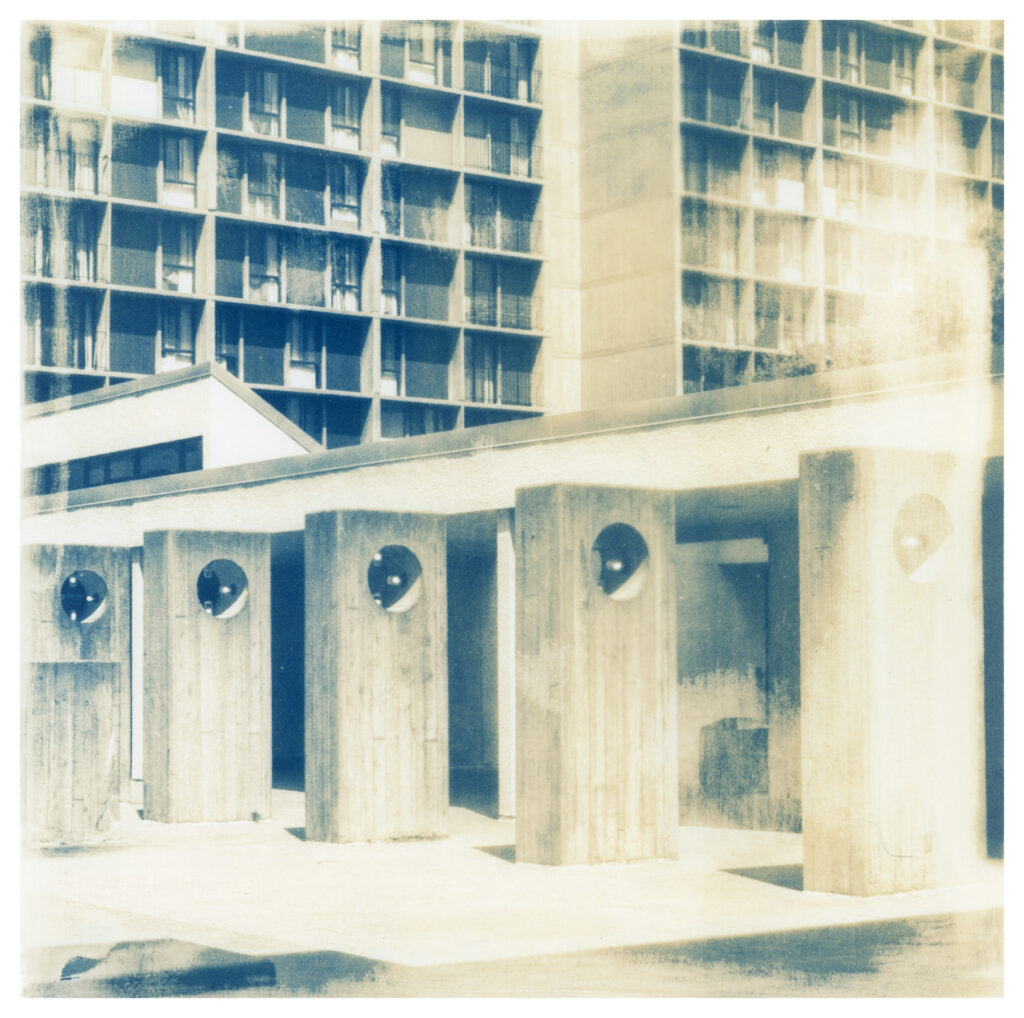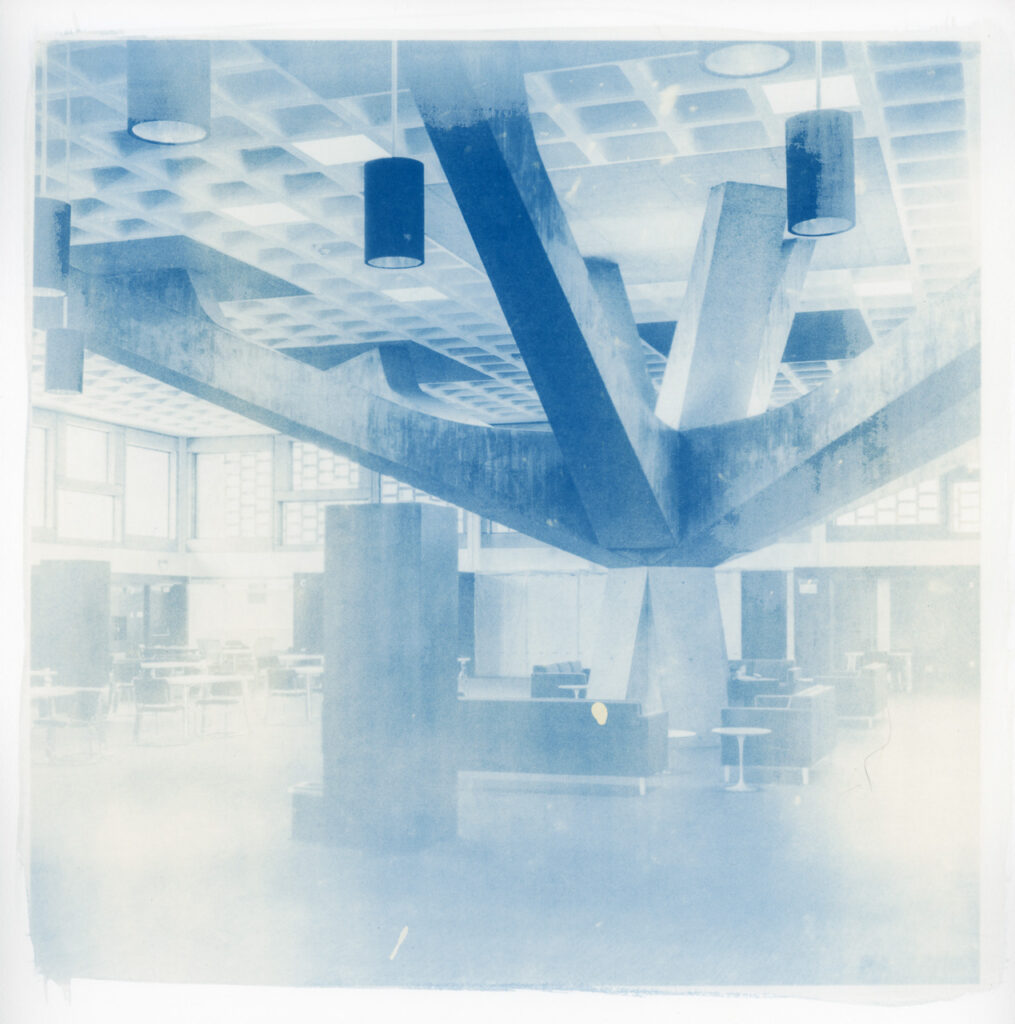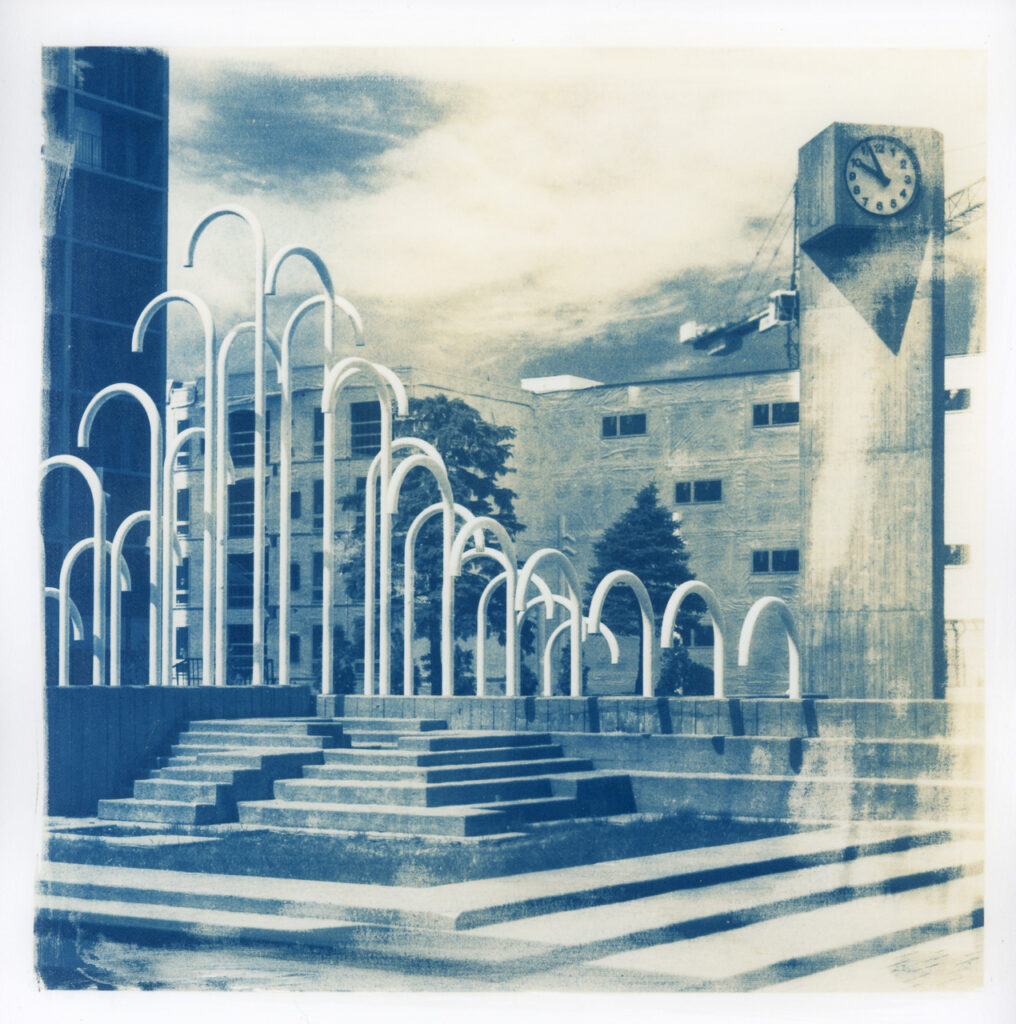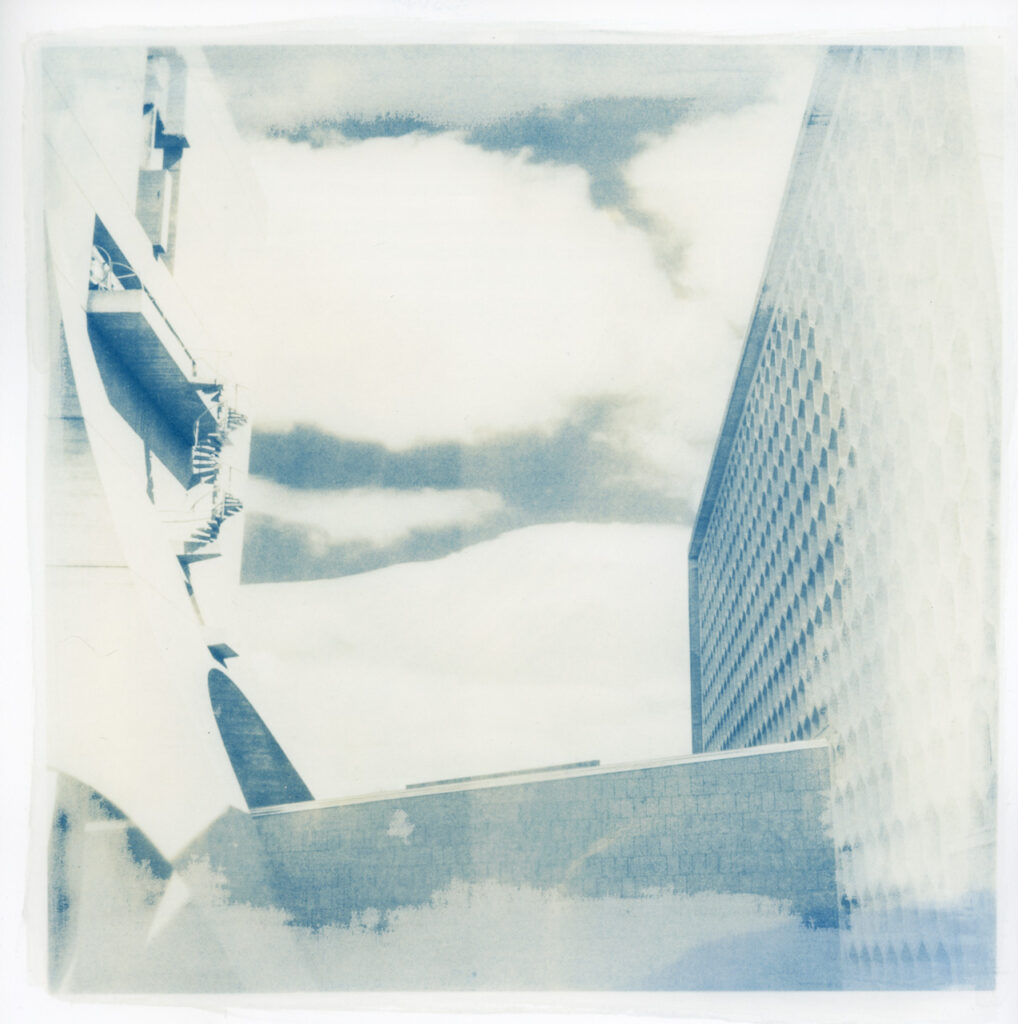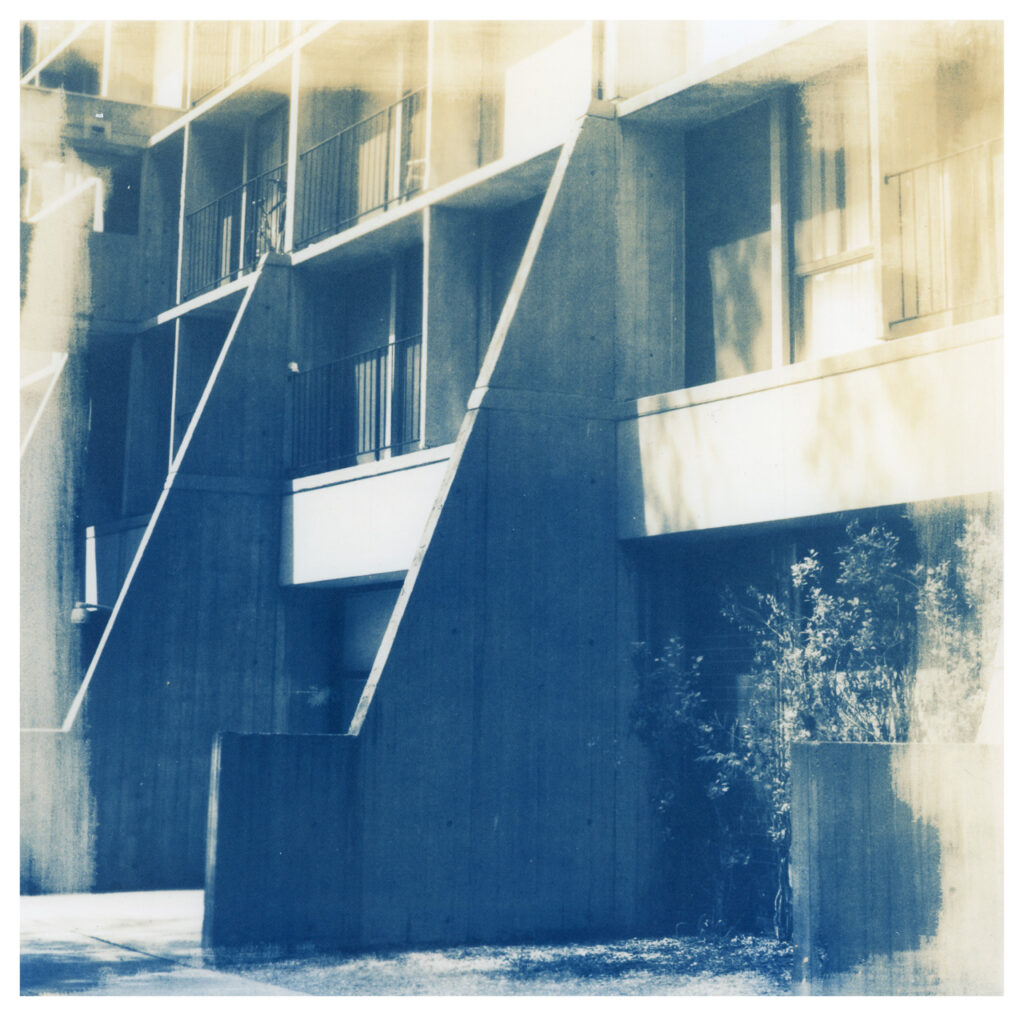
I’ve been fascinated by brutalist architecture since arriving in Minneapolis, MN in 2005 to attend graduate school. The UMN Regis Center for Art is located only a few blocks away from Ralph Rapson’s concrete masterpiece, Cedar-Riverside Plaza. On a daily basis, I passed through the monumental structures, which are both omnipresent in the neighborhood and also distinctly cut-off in isolation. Originally intended as an utopian city-within-a-city which would house a diverse population of different income brackets, Cedar-Riverside Plaza fell out of favor, became public housing, has undergone renovation, and now is a center for the East-African community in Minnesota. Although I no longer live in the Twin Cities, the concrete towers consistently draw my attention as they represent, along with most brutalist architecture, a last-moment before utopian thought would be railed against and succumb to the logic of the marketplace.
With this series of images, I am focusing on the transitory nature of these seemingly immovable concrete monuments (and their underpinning egalitarian, utopian concepts) by taking images from my archives of different brutalist sites, creating cyanotypes, and gently bleaching away the image. Partly nostalgic and partly referencing the blue-print process, these images depict Rapson’s Cedar-Riverside Plaza alongside images of Marcel Breuer’s St. John’s Abbey. Although both sites are located in the Northern Midwest and embraced the ethos of late modern, brutalist architecture, they have followed distinctly different trajectories since construction.

